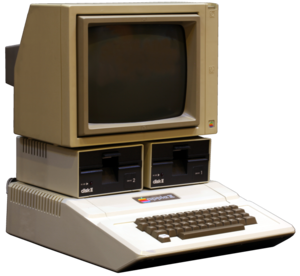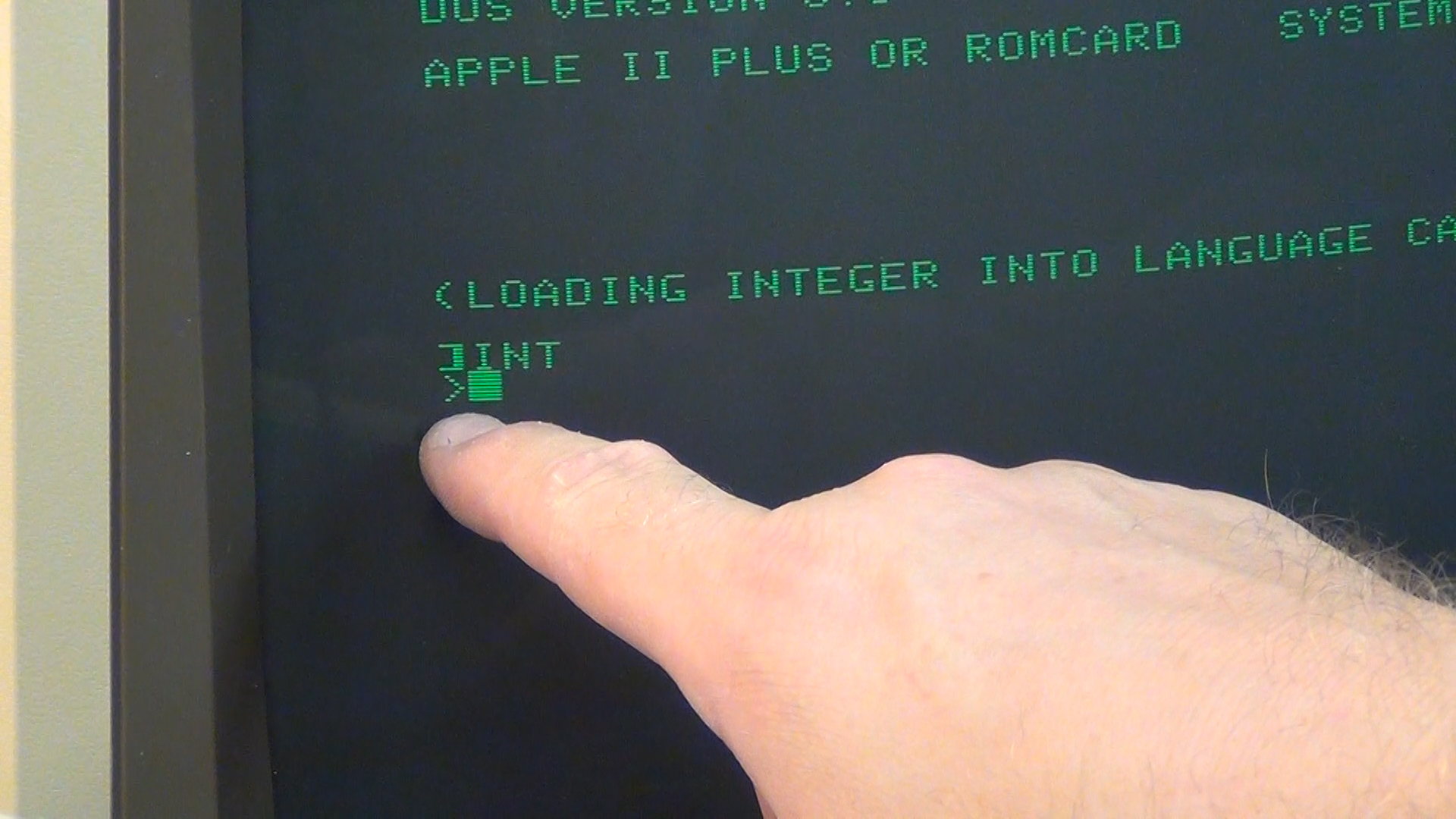 |
| Apple II: My first personal computer |
Without BASIC, the computer revolution from being primarily a computing device to an everyday knowledge tool would have been much slower.
 |
| Apple II had two BASICs, Integer and Floating |
Basic Turns 50 | EE Times
This month, BASIC celebrates an anniversary
reached by very few languages: 50 years of continuous use. During that
long career, whose highlights mostly occurred before the age of 25, it
has beckoned millions to the world of programming, most of whom
immediately forsook the language for more robust alternatives.
▶ Live Webcast: The Future of Computing - The Next 50 Years - YouTube
The Original BASIC | True BASIC
MAY 1, 1964 -- The Birth of BASIC
Over 50 years later, it still enables anyone to write their own programs.
John G. Kemeny and Thomas E. Kurtz invented BASIC (Beginner's All-purpose Symbolic Instruction Code) for use at Dartmouth College so that their students could quickly write useful computer programs and at the same time, understand what they were doing. English-like functions and statements helped ordinary folks perform extraordinary feats with their computer programs. They made it freely available to everyone who wanted to learn how to program computers. It soon became a world standard. True BASIC is still unequaled for raw power, logical approach, and easy-to-comprehend usability.
Introduction - DTSS - Dartmouth Time Sharing System
A small group of "friends of DTSS" have started a project to recreate the first DTSS (Phase I), which ran from 1964 to sometime in 1967. This system ran on two computers, a GE-235 to execute programs (such as ones written in BASIC) and a GE DN-30 (Datanet-30) to handle communications (to and from teletypes) and to schedule the execution of programs on the 235. This ingenious two-computer design was created by Tom Kurtz and John Kemeny.
 |
| Kurtz & Kemeny |
The work of Kemeny and Kurtz in the early 1960's took two directions. Influenced by the work of J.C.R. Licklider and John McCarthy at MIT, Kemeny understood that a time sharing system would make possible the universal access they aimed for. A team of the two faculty members and a group of undergraduate research assistants developed a prototype system. It allowed multiple users short spurts of access to the central computer from remote terminals in such a way that each user enjoyed the illusion that he was the sole user. This Dartmouth Time Sharing System (DTSS) became operational in the Fall of 1964. The value of a time sharing system is that it ended the hardship of batch processing which often required hours or even days of waiting between runs of a program while it was being developed and debugged. Time sharing utilizes the great speed of computers compared to humans to greatly enhance the efficiency of computing from the point of view of the human users.
K&K BASIC let a whole generation of programmers
use Personal computers such as the Apple II, Mac, & IBM PC
The careful work of Kemeny and Kurtz to make an easy to learn but powerful computer language bore tremendous fruit. After its introduction at Dartmouth in 1964, BASIC spread as did DTSS to other campuses and government and military situations. And BASIC made personal computers possible. Beginning in 1975 with the success of Bill Gates and Paul Allen to write an interpreter for a subset of BASIC commands for the Altair computer, one form or another of BASIC spread to and accelerated the personal computer revolution. (See Amateur Computerist, vol 2 no 4, p. 9-12)
2 comments:
Thanks for that technology milestone lesson. BASIC was the first language I learned (in HS), followed by FORTRAN, Pascal, COBOL, and ADA before I finally got around to learning C. Unfortunately, I built some bad programming habits in BASIC, most of them a result of the infamous GOTO command.
An excellent overview of the history of BASIC can be found in "Back to BASIC: The History, Corruption, and Future of the Language", by Kemeny and Kurtz (Addison-Wesley, 1985). Written by the originators of the language, it dispels a number of myths and misconceptions. The BASICs that most people learned on microcomputers were pale imitations of Dartmouth BASIC, giving the language an undeserved bad reputation in some circles.
Post a Comment